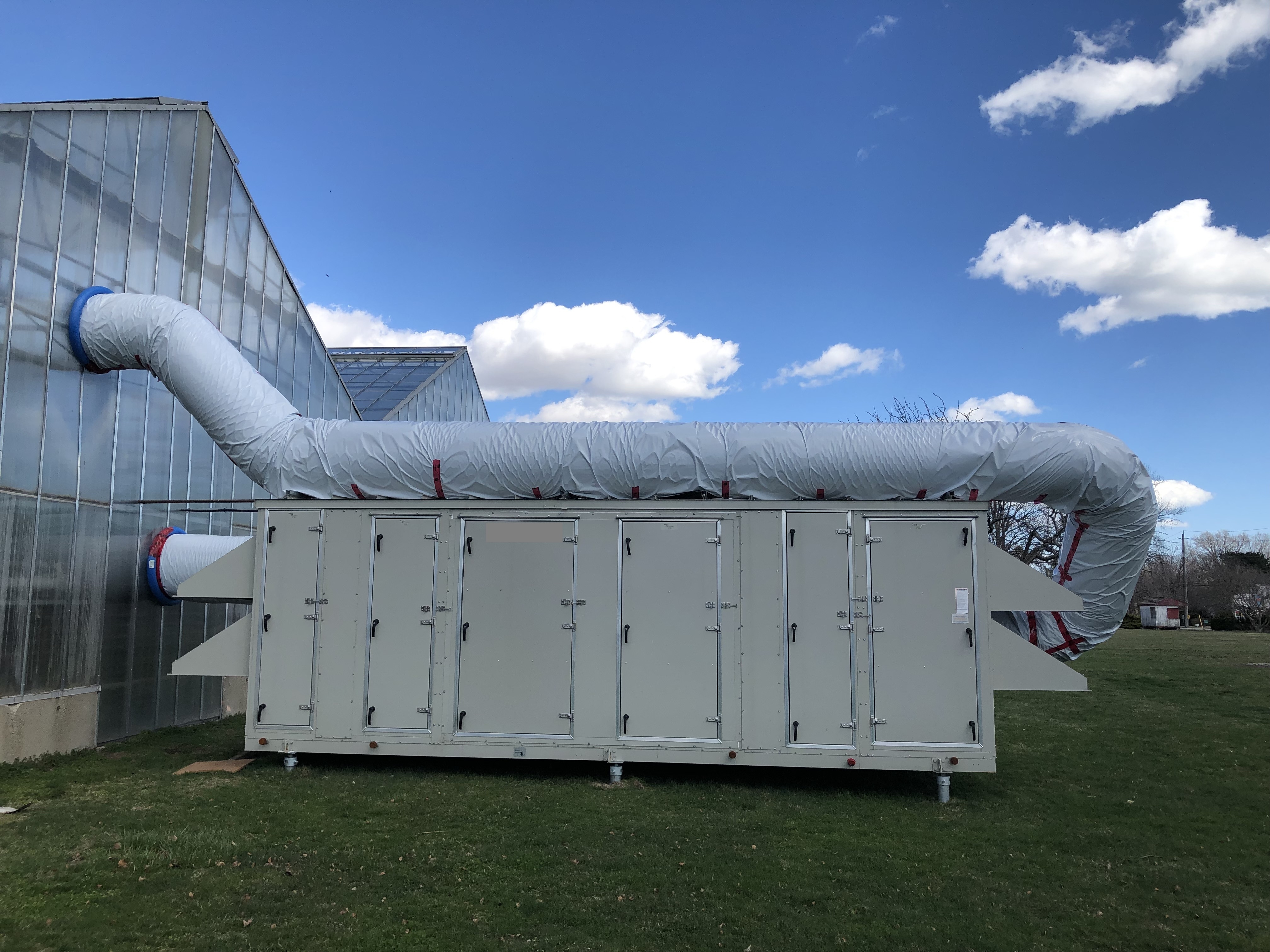
News
Dehumidification technology reduces greenhouse energy consumption
December 3, 2019 By Agricultural Adaptation Council.

Heat loss is a significant problem for greenhouse growers during the winter months. Plants transpire during photosynthesis, causing humidity build-up in the greenhouse, so vents are opened to bring in cold, dry air, resulting in heat loss.
This has led Flowers Canada (Ontario) Inc. to launch a research project to evaluate different solutions to reduce greenhouse energy consumption.
“Dehumidification came up time and time again as a solution for the sector,” says Dr. Jeanine West, the organization’s Environmental Specialist. “With most growers heating their greenhouses with natural gas, a technology that reduces fossil fuel consumption could be really valuable.”
The research team includes West, Dr. Jingjing Han of FCO, and Dr. Ann Huber with Soil Resource Group.
With funding from the Greenhouse Renewable Energy Technologies (GRET) research and development initiative, four different technologies are being tested at three different facilities for their potential to reduce fossil fuel use – and by extension, greenhouse gas emissions – during the peak greenhouse use period of fall through early spring.
These include a mechanical dehumidification system, a liquid desiccant dehumidifier that runs humid air past a brine solution to absorb the moisture and then heats the brine to regenerate it, and a heat recovery air exchange ventilation system that is located outside the greenhouse and warms up the cool, dry air as it enters the facility.
A flower greenhouse is piloting all three systems in adjacent zones, and a newly built herb greenhouse is testing mechanical and liquid desiccant dehumidification in adjacent zones alongside a similarly-sized control zone. Both locations are in the Niagara area.
The fourth technology is called State Point Liquid Desiccant, a prototype that combines the liquid desiccant approach with heat exchange into a single system. It’s currently being trialed in a tomato production facility in Leamington, where approximately half the greenhouse is running the new system and the other half is serving as a control zone.
According to West, researchers also installed extensive monitoring equipment that measures everything from how often the vents are opened to how much electricity each dehumidification system uses and how much moisture is extracted from the air.
Data collection is still underway – although one site has been in place since last fall, the two others weren’t up and running until spring 2019 – so conclusive results will not be available until later this winter.
However, early results show that dehumidification is an effective way of combating humidity in a greenhouse environment, especially compared to the traditional method of simply opening the vents, while also decreasing energy use and greenhouse gas emissions.
“The technologies demonstrated in this project encourage energy savings and decreased fossil fuel use by minimizing the amount of venting required by greenhouses to manage humidity – that’s because the heat generated by the boilers is not lost,” says West.
Optimal performance of these types of systems is seen once overnight temperatures drop below 10C. Every greenhouse and every crop is different, though, so there is no single solution that will work equally well for all growers.
“To save energy, you have to consider the whole process at your facility – how you use a dehumidification system matters in terms of the benefit you will see,” she says, adding trials starting this fall will focus on optimizing the equipment for the best benefits for growers.
Although the research is still ongoing, West encourages growers to consider the following key takeaways from the work to date:
· Better relative humidity control is definitely possible – but optimizing is key
· Dehumidification systems can’t just be installed as add-ons, they must be incorporated into the existing greenhouse environmental control systems in order to save energy
· The technology may not work for all growers, especially those who need humid conditions for their crops
Tours of the pilot facilities are planned for early winter.
Print this page